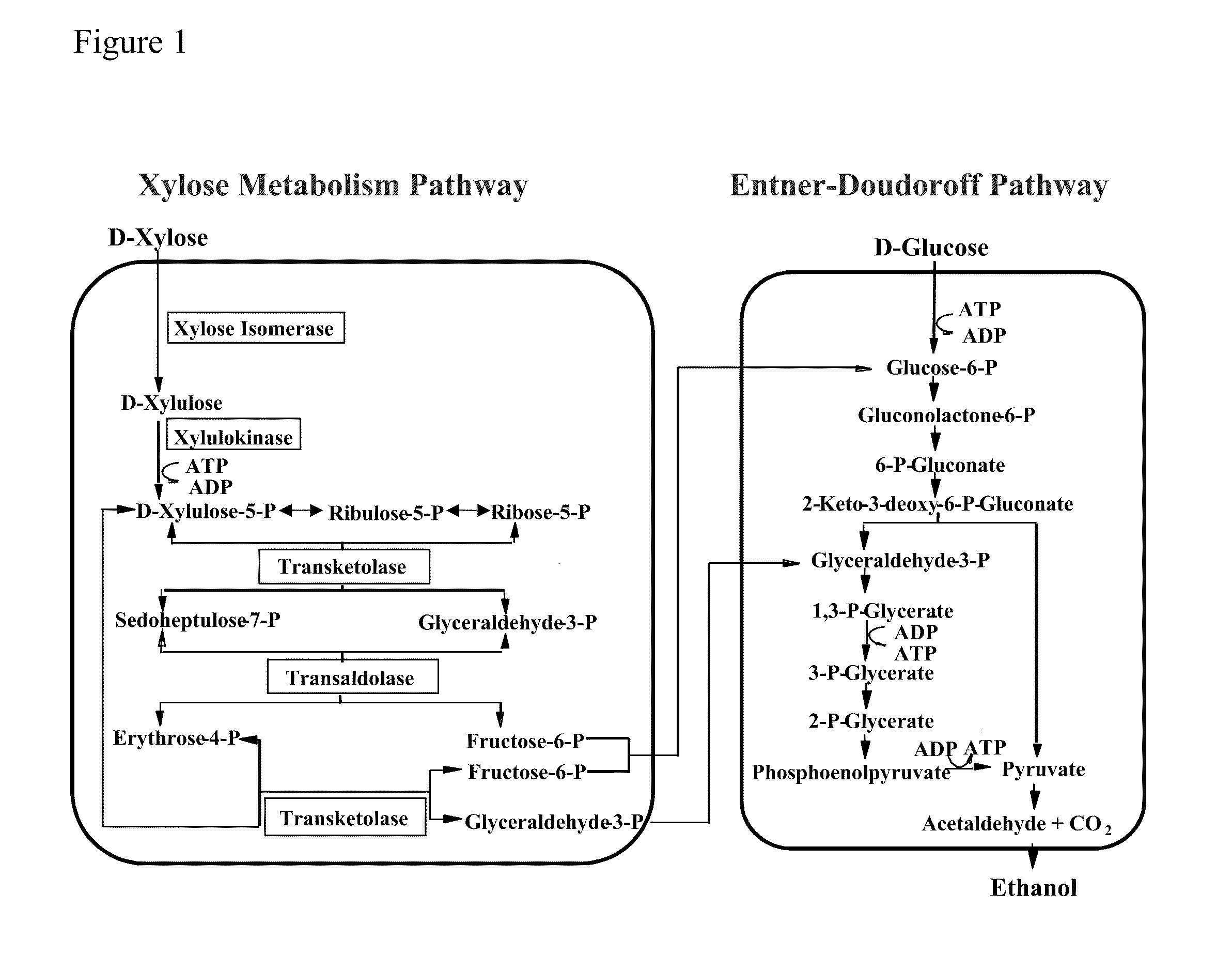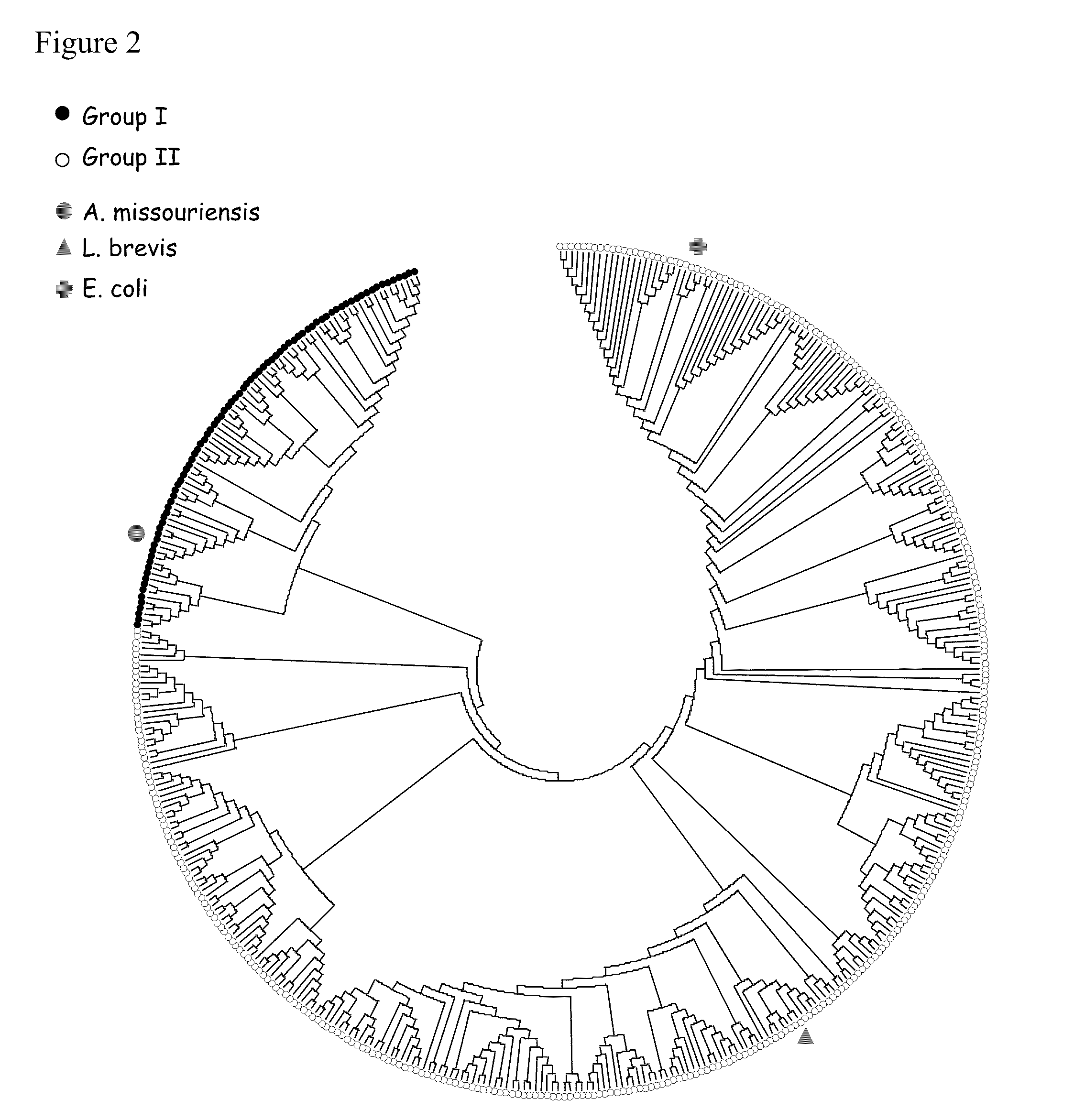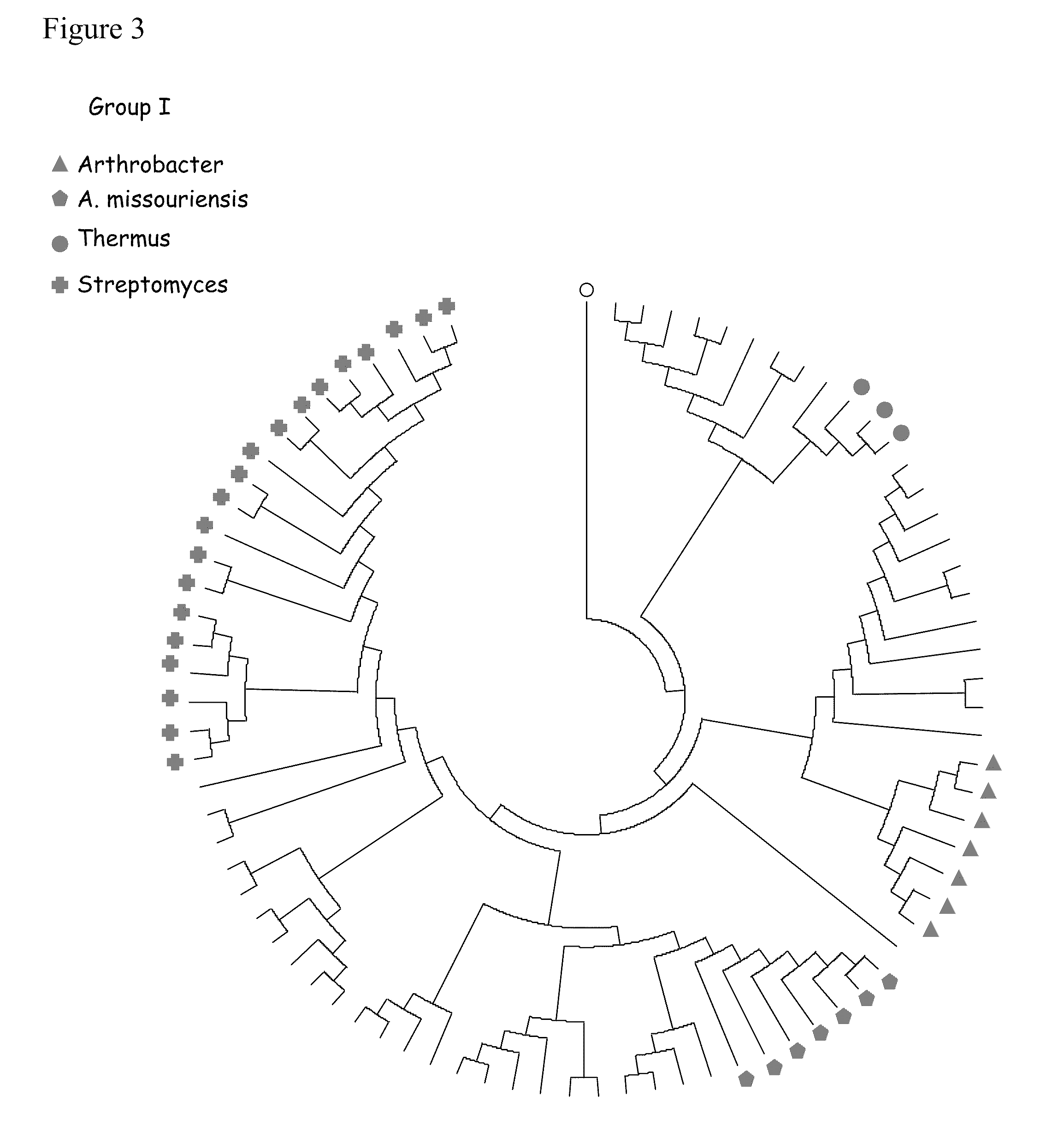Xylose utilization in recombinant zymomonas
a technology of zymomonas and xylose, which is applied in the field of microorganisms and genetic engineering, can solve the problems of engineered strains that do not grow and produce ethanol, and achieve the effect of improving xylose utilization and ethanol production
- Summary
- Abstract
- Description
- Claims
- Application Information
AI Technical Summary
Benefits of technology
Problems solved by technology
Method used
Image
Examples
example 1
Construction of Chimeric Xylose Isomerase Genes and Assembly of Double Crossover Suicide Vectors
[0140]Constructs were made for integration and expression in Zymomonas mobilis of the coding regions for xylose isomerases from Actinoplanes missouriensis (AMxylA), Lactobacillus brevis (LBxylA), and Escherichia coli (ECxylA). The coding sequences were optimized for expression in Z. mobilis according to the codon bias of Z. mobilis ZM4 and synthesized by GenScript Corporation (Piscataway, N.J.). Each was cloned into pUC57 at the EcoRV site and provided as the plasmids pUC57-AMxylA (with codon optimized AMxylA coding region SEQ ID NO:308), pUC57-LBxylA (with codon optimized LBxylA coding region SEQ ID NO:309), and pUC57-ECxylA (with codon optimized ECxylA coding region SEQ ID NO:310). The optimized xylA coding sequences encode the native xylose isomerases (XIs).
[0141]The xylA coding sequences were constructed into chimeric genes with the structure of Pgap-xylA-araD3′UTR by linking with a 3...
example 2
Integration of Chimeric AMxylA, LBxylA, and ECxylA Genes into Zymomonas mobilis Strain ZW641
[0152]Effects of expressing the A. missourinesis, L. brevis or E. coli XI in a xylose-utilizing Zymomonas mobilis were assayed using strain ZW641. Preparation of the ZW641 strain is described in Example 1 of U.S. Pat. No. 7,741,119, which is incorporated herein by reference. Strain X13L3 described therein was later renamed ZW641. ZW641 was prepared by sequentially integrating the two operons PgapxylAB and Pgaptaltkt, along with the chloramphenicol resistance selectable marker, into the genome of Zymomonas mobilis ZW1 (ATCC #31821). Transformants were further adapted for xylose utilization by growth in xylose-containing medium.
[0153]In the ZW641 integrated PgapxylAB and Pgaptaltkt operons the xylA, xylB, tal, and tkt coding regions are from E. coli genes. Though ZW641 has all four genes necessary for xylose metabolism, xylose utilization is not optimal. Thus a background level of xylose utiliz...
example 3
Characterization of AMxylA, LBxylA, and ECxylA Expression in Zymomonas mobilis Strain ZW641
[0156]ZW641 has a copy of the native E. coli xylA coding region, which is expressed at a low level. Strains ZW641-ara355, ZW641-ara356, and ZW641-ara357 each contain an additional copy of a codon-optimized xylA coding region: AMxylA, LBxylA, and ECxylA, respectively. Enhanced xylose utilization, ethanol production, and growth in xylose were assayed for the strains.
[0157]To examine the growth of these new strains in media containing xylose and compare them with the parent strain ZW641-1A, two strains (#1 and #2) of each of ZW641-ara355, ZW641-ara356, and ZW641-ara357 from the MMG5-Spec250 plates described in the previous example were re-streaked onto a MM×5 plate (the same medium except glucose is replaced by xylose). ZW641 was also streaked onto the plate as a control. Cells on the plate were grown for 6 days at 30° C. inside an anaerobic jar with an AnaeroPack. Growth was observed for all thr...
PUM
| Property | Measurement | Unit |
|---|---|---|
| threshold sequence identity | aaaaa | aaaaa |
| temperature | aaaaa | aaaaa |
| temperature | aaaaa | aaaaa |
Abstract
Description
Claims
Application Information
 Login to View More
Login to View More - R&D
- Intellectual Property
- Life Sciences
- Materials
- Tech Scout
- Unparalleled Data Quality
- Higher Quality Content
- 60% Fewer Hallucinations
Browse by: Latest US Patents, China's latest patents, Technical Efficacy Thesaurus, Application Domain, Technology Topic, Popular Technical Reports.
© 2025 PatSnap. All rights reserved.Legal|Privacy policy|Modern Slavery Act Transparency Statement|Sitemap|About US| Contact US: help@patsnap.com



